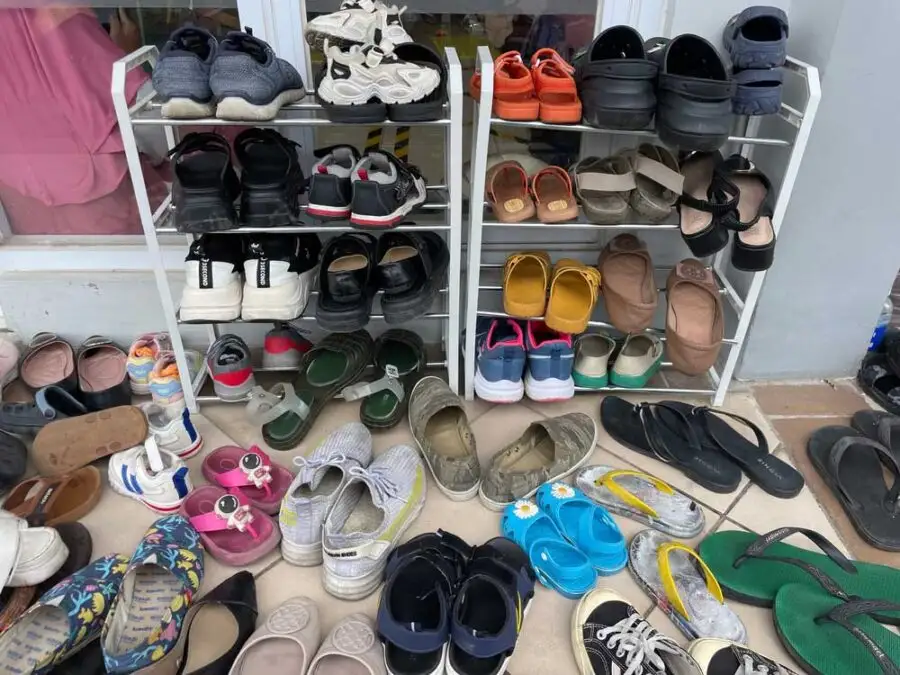
Start your seasonal cleanup with your feet
With the warmer season approaching, it’s a good idea to ask yourself: are your shoes still good? Worn-out footwear can easily lead to discomfort.Many people hold on to old shoes without realizing they can lead to foot, knee or back discomfort. Collapsed soles and worn-out support may silently affect your posture and daily comfort. Here is how to review your footwear the right way.
Why worn shoes can lead to pain
Old shoes lose their cushioning and structure. This forces the feet to work harder, often leading to strain in the legs, hips or back. These subtle changes are easy to overlook until pain appears and becomes frequent, this includes common plantar pain. Recognizing the signs early is key to preventing discomfort.
5 Signs Your Shoes Are No Longer Good
Worn soles, reduced cushioning and instability are early signs of fatigue in a shoe. When these signs show up, your body starts to compensate. This can lead to persistent discomfort or foot pain. The risk of slipping or developing postural imbalances increases.
A shoe is considered worn if:
- The outer sole is smooth or shows uneven wear
- The cushioning is firm and does not rebound
- The upper part has collapsed or torn
- The insole is thinned, especially under the heel or arch
- You experience discomfort even during short walks
Inspect additional components
The lining may cause irritation if it is damaged. A crushed toe box can increase pressure on the toes. A twisted tongue may add pressure on the top of the foot. The heel counter should feel solid. Deep folds or cracks in the midsole mean the shock absorption is likely gone. Even frayed laces can affect support.
How long does a shoe last?
It depends on use and activity. In general:
- Running shoes: 600 to 800 kilometres
- Hiking shoes: 1000 to 1500 kilometres
Someone walking 5 kilometres daily may wear out shoes in 4 to 5 months. If you are on your feet for long periods, inspect your footwear more regularly.
Simple tests to check your shoes
Flexion test
Bend the shoe gently in the middle. A shoe that folds too easily no longer provides firm support.
Alignment test
Place the shoe on a flat surface and observe the heel and sole. If the shoe tilts, leans or rocks, it may have lost its internal stability.
Comfort test
Walk a few steps with the shoe on. Any sensation of pressure, instability or slipping suggests it is no longer adequate.
Balance test
Stand on one leg while wearing the shoe. Difficulty holding your balance may point to reduced support or cushioning.
Humidity test
Persistent odours or dampness suggest that the shoe has lost its breathability, which may create risks for skin irritation or infection.
If your shoes are still usable, consider donating them to someone in need.
Questions often asked
Can worn sandals create pain?
Yes. Flat sandals without structured soles or arch support can lead to discomfort, especially for those who stay active or walk often.
Is it bad to wear last year’s sneakers?
Not necessarily. The important step is to check for wear and be attentive to how your body reacts.
What if I replaced my shoes and still feel pain?
The issue may come from posture or movement patterns. A podiatrist can assess your alignment and recommend options such as custom foot orthotics.
Cleaning out your shoes during spring is a simple way to improve comfort and posture. Worn footwear can silently affect the way you walk and stand, leading to various discomforts.
If you have any doubts about a pair, it is safer to replace them. If pain persists, a consultation with a podiatrist can help identify underlying causes and suitable care options.